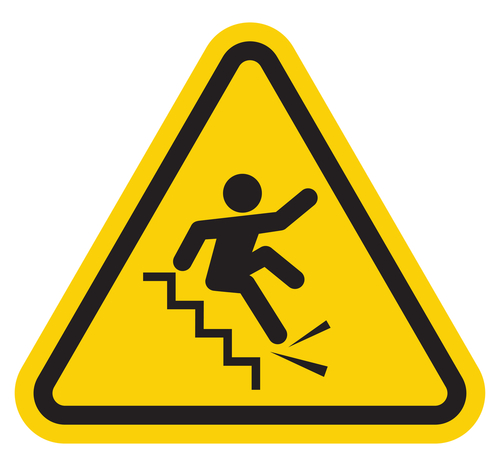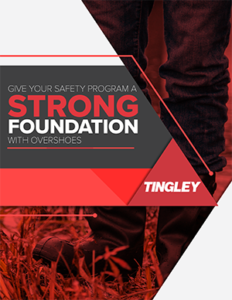The national statistics on injuries and deaths from workplace slips, trips, and falls are disturbing. Today we’ll give you some actionable advice on keeping your workers from adding to those statistics.
 |
Slips, trips, and falls cannot be taken lightly. Consider:
- In one recent year, more than 800 American workers fell to their deaths. On average, falls account for about 15 percent of all occupational fatalities, second only to motor vehicle accidents.
- In addition, thousands of workers suffer nonfatal injuries from falls every year—many of them temporarily or permanently disabling.
One reason that falls are so common is that there are hazards everywhere. Employees can slip, trip, or fall in production areas, in offices, on stairwells, from ladders, off loading docks–and other places specific to your workplace. An article from our sister website Safety.BLR.com® offers the following advice on trip hazards.
| Learn how overshoes can reduce slips, trips, and falls at your facility. Sponsored by: Tingley |
Know What OSHA Says
In recognition of the prevalence of fall hazards and the alarming statistics of fall injuries and fatalities, OSHA has issued several standards for both general industry and construction regarding fall hazards in the workplace. These include regulations for walking and working surfaces; guarding floor and wall openings and holes; stairs; ladder design, inspection, and use; and working at heights.
Being familiar with these regulations can help you identify hazards and take steps to prevent slips, trips, and falls in your workplace.
Recognize the Hazards
Common causes of slips, trips, and falls include:
- Messy, cluttered work areas
- Tools, materials, cords, and other items lying on the floor in places where people walk
- Poor visibility caused by inadequate lighting or burned-out bulbs
- Not watching where you’re going or carrying something you can’t see over
- Running or walking too fast
- Spills and wet floors
- Open drawers (a not-so-obvious trip hazard!)
- Uneven, defective flooring, worn stairs, or worn spots in carpets that nobody has reported or fixed
- Failure to use handrails when going up or down the stairs
- Not enough caution on ladders
- Wearing shoes that are not appropriate for the work space or the job
Eliminate Trip Hazards
Many fall injuries occur on level ground when people trip over unexpected objects in their path. Help eliminate trip hazards by training employees to follow these do’s and don’ts.
Do:
- Keep work areas neat and tidy, putting tools, materials, and other items away after use.
- Pick up items off the floor, even if they didn’t put them there.
- Step over or around obstructions, not on them.
- Walk slowly and change directions slowly, especially when carrying a load.
- Watch for changes in floor level—such as a few steps or a ramp up or down.
- Report lighting problems, such as burned-out bulbs, to maintenance right away.
- Use a flashlight if they need more light leaving the facility in the dark.
Don’t:
- Don’t leave boxes, bags, tools, or other materials on the floor.
- Don’t block walkways with hand trucks, equipment, or materials.
- Don’t leave cords or cables in walkways.
- Don’t place anything on stairs.
- Don’t leave drawers open.
Don’t Slip Up on Slip Hazards
It’s easy to slip on wet or smooth surfaces, and down you go. Even a little slip can add up to a big injury. Here are some preventive measures:
- Put up signs or barriers to warn people when floors are wet or hazardous.
- Put down mats near entryways on rainy days.
In addition, instruct employees to:
- Clean up spills, drips, and leaks immediately.
- Wear sensible shoes with nonskid soles, and wipe their feet when they come inside on wet days.
- Shuffle feet on slippery surfaces.
- Report slip hazards if they can’t fix them.
Tomorrow we’ll look at some training recommendations to lower the incidence of slips, trips, and falls at your facility.


Improving Safety culture is the backbone of safety performance indicators.